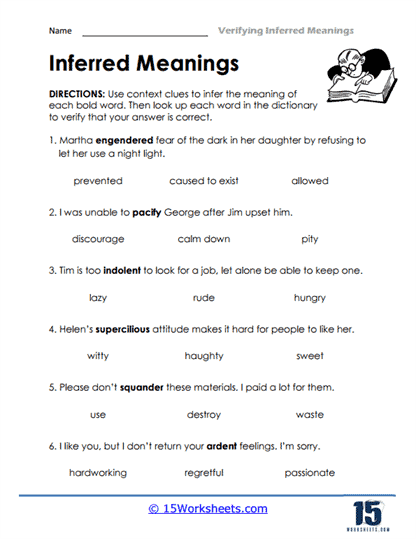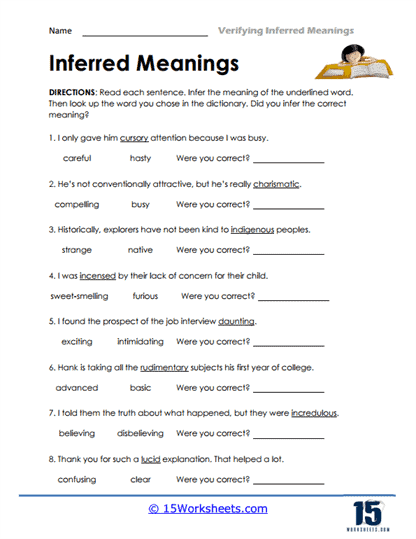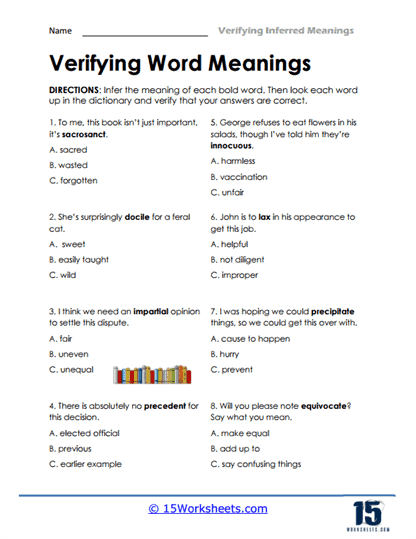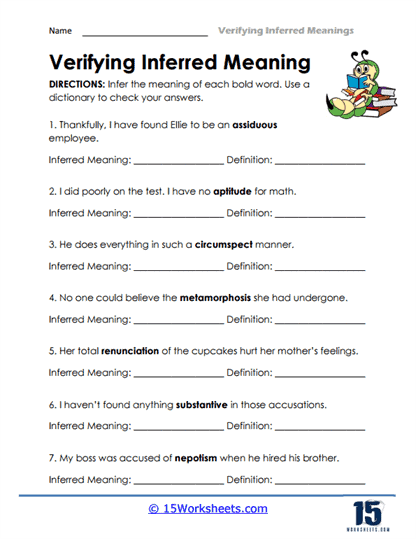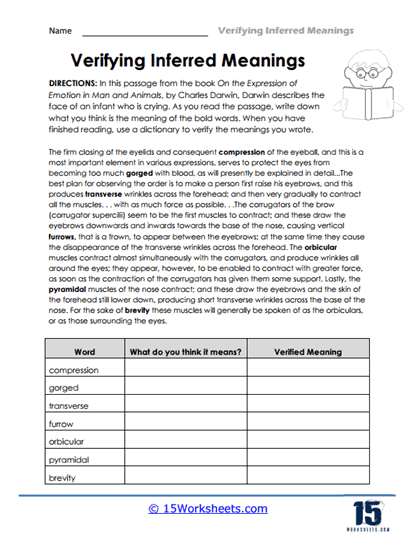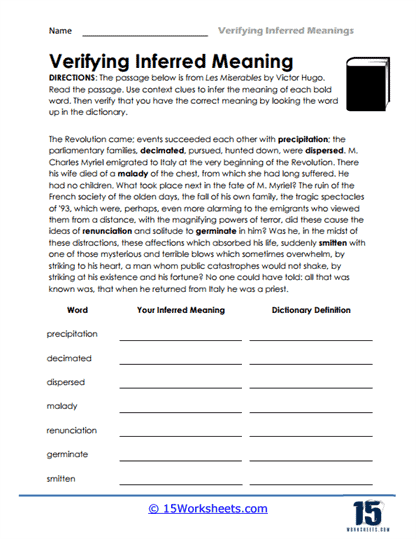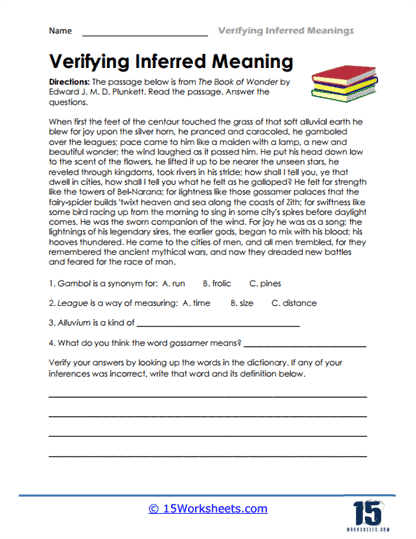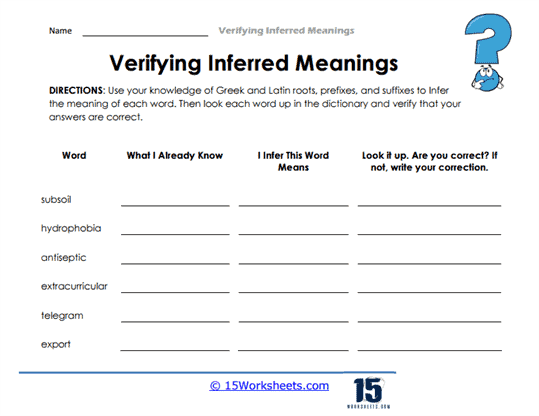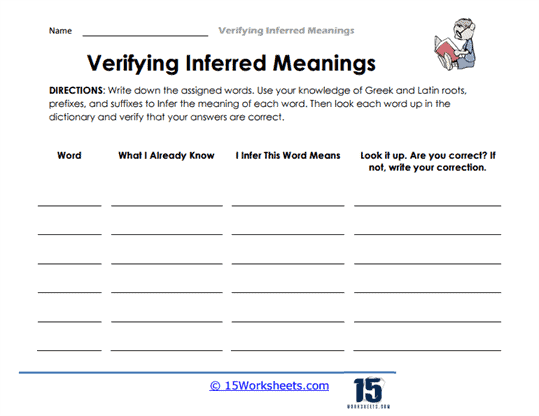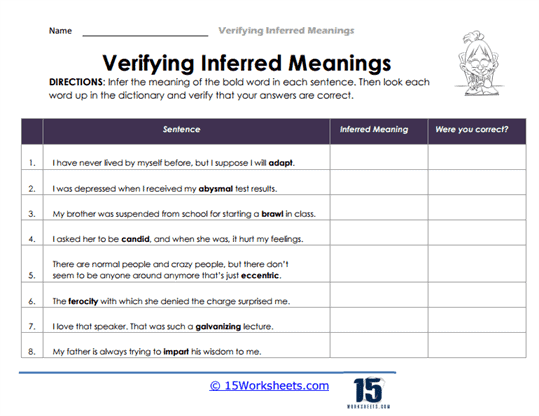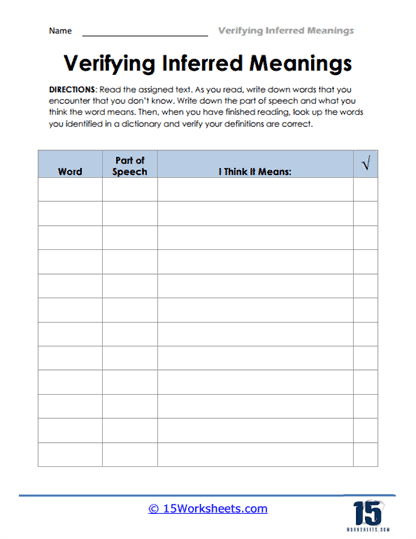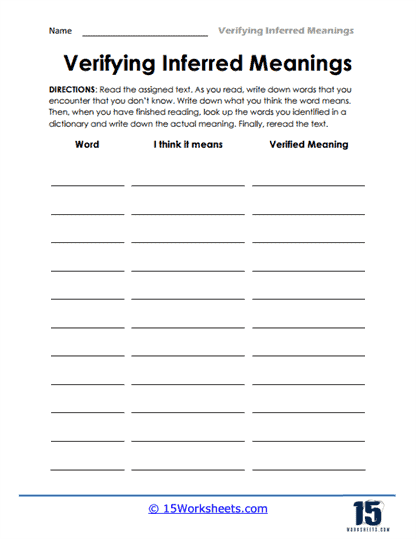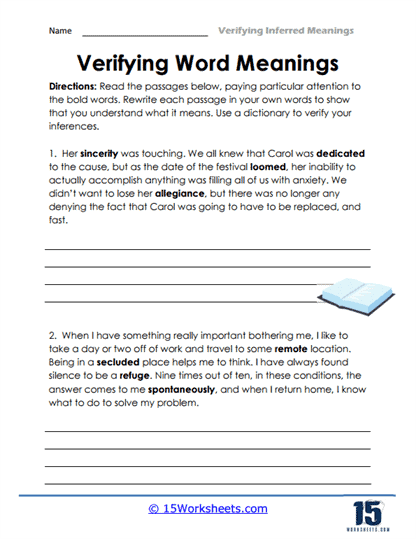Verifying Inferred Meanings Worksheets
All About These 15 Worksheets
These worksheets are designed to help students improve their reading comprehension skills by analyzing and verifying the meanings of words, phrases, and sentences that are implied but not explicitly stated in a text. These worksheets include a variety of activities that encourage critical thinking and analysis of language.
Some of the activities that are included in these worksheets involve:
- Identifying context clues – Students identify context clues in a text that help them infer the meanings of words or phrases.
- Analyzing sentence structure – Students are encouraged to analyze the structure of sentences in a text to better understand implied meanings.
- Rewriting of sentences – Students are asked to rewrite sentences to show clear understanding of their meanings.
- Verifying inferred meanings – Students verify inferred meanings by looking up definitions in a dictionary or by asking questions to clarify meaning.
Overall, these worksheets can help students to develop a deeper understanding of the nuances of language and to appreciate the importance of context in understanding meaning. By analyzing and verifying inferred meanings in a text, students can expand their vocabulary, improve their reading comprehension skills, and become more confident and engaged readers.
How to Verify Inferred Meanings of Words
Inferring is a way to use what you already know or to make educated guesses about something you don’t know. Students should be familiar with how to infer a word’s meaning since it is an essential skill for reading and comprehending any literature. Inferences are easy to make; however, some students have difficulty deciphering a word’s meaning. This article discusses a few pointers for figuring out a new word’s meaning quickly and easily. The following are the effective ways to verify inferred meanings of words:
1. Consider the Context of a Situation
Context consists primarily of the words immediately preceding and after the target word. The context in which a new term is used is critical to deciphering its meaning. Search the context for clues and explain synonyms, antonyms, and appositives that are utilized in the context. Describe the lesson’s goals and objectives using previous lessons as a foundation.
2. Dividing the Words
Dividing the term into smaller bits will help if the word is difficult to decipher. You can use a word’s roots and suffixes to determine its meaning. In fact, they should be your primary focus. This will help you pronounce the word correctly. Affixes and roots are helpful when inferring a new word from an existing one. Understanding the prefix or suffix and the root word can allow you to deduce the meaning of a word correctly.
3. Incorporating the Help of a Thesaurus
It’s always a good idea to have a thesaurus or dictionary nearby while you’re reading. To begin, try to deduce the meaning of a new term using your best efforts and knowledge. Using a thesaurus can help you grasp what a new term means and save it for future reference.
An excellent technique for teaching students to recognize the various kinds of context cues is for teachers to act out the process of self-questioning with students. You can check the surrounding words to draw attention to the unknown term and its possible hints.
4. Discuss Context Cues
Context cues should be discussed regularly so that they are not forgotten. Your class wiki, website, or blog would be great places to publish the list of context clues and some examples that go with it. Students can quickly recall context cues if you post the list on the classroom bulletin board. Practice looking for context cues.
5. Mark Digital Texts
Digital texts can be marked in different ways to help students recognize context cues. Fonts can be changed to emphasize or underline unknown words. You can make notes next to the hints you think will lead them to the definition of a word.
It is possible to incorporate various helps into the digital text, making it easier for students to comprehend what they are reading. Other resources are available besides the definitions, synonyms, antonyms, photos, and audio descriptions that can be linked to specific words and phrases.
6. Indulge in Activities
The interactive whiteboard can display an excerpt from any book that might be hard to decipher. Make your students read the passage together in groups. Bring them to the whiteboard and ask them to point out words they don’t understand and context clues around them. Have them share their ideas and discuss them.
Ask your students to use dictionaries and other reference materials to check their assumptions. Use the class wiki to keep track of the new language that students learn by having them look for context clues. Share the responses and ask students to describe how they came up with them. Repeat the process.

